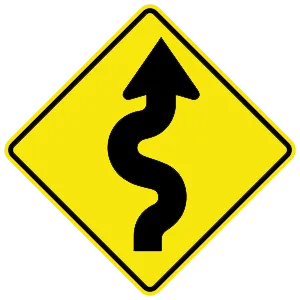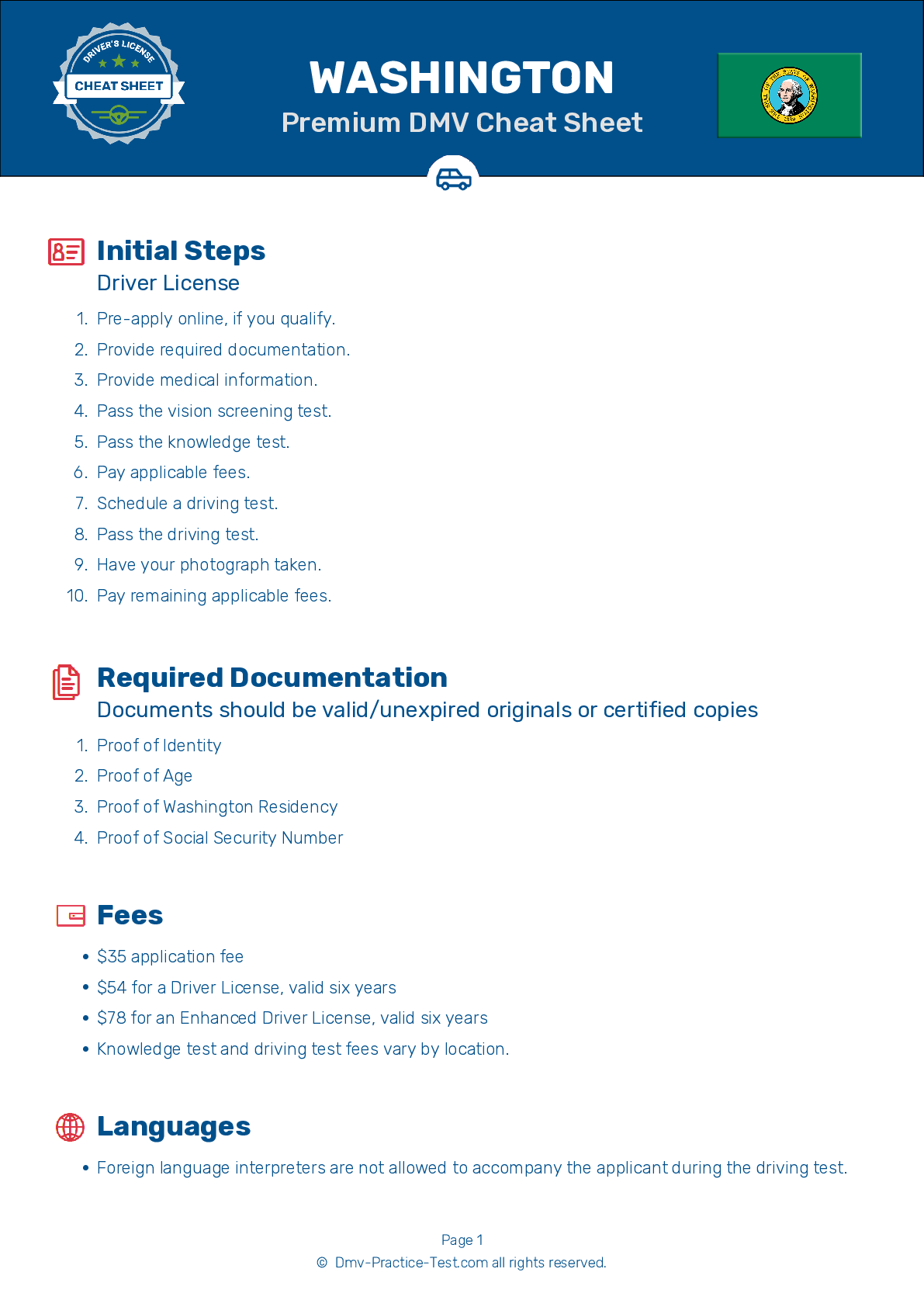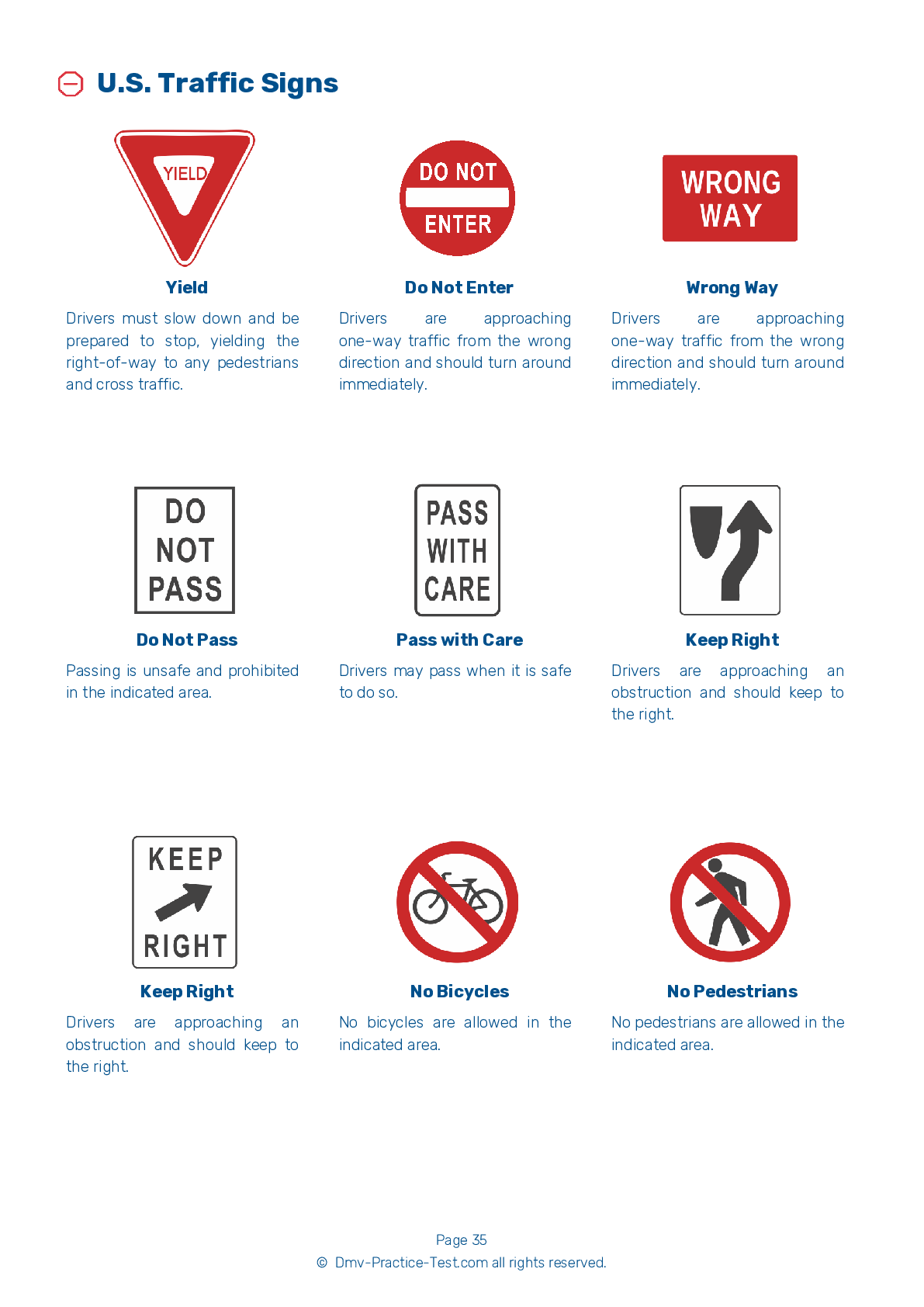FREE Washington DMV Practice Test #20 Page 2 of 4
The Washington DMV practise examinations have been updated for January 2025. It includes questions based on the Washington Driver Handbook's most significant traffic signals and legislation for 2025. Use actual questions that are very similar (often identical!) to the DMV driving permit test and driver's licence exam to study for the DMV driving permit test and driver's licence exam.
On the practise exam, each question gets a tip and explanation to help you remember the concepts. The written component of the official Washington DMV test will feature questions about traffic rules, traffic signs, and driving statutes, as well as knowledge from the Driver Handbook.
To obtain a passing grade, you must correctly answer 20 of the 25 questions. Use the practise exam provided by the Washington Department of Motor Vehicles to help you prepare for your instruction permit or driver's licence.
The DMV exam is available in several languages.
Using any kind of testing assistance will result in an automatic fail, and the DMV may take additional action against your driver's licence, so stay away from it.
7 . This road sign means:

This sign indicates that the road ahead winds with a series of turns or curves.
8 . An intersection has no traffic signs or signals. You arrive at the same time as a vehicle to your right. You should:
When two vehicles arrive to an uncontrolled intersection at the same time, the vehicle on the right has the right-of-way. Once the vehicle on the right has safely passed through the intersection, the other driver may proceed.
9 . To change lanes you should:
Before changing lanes, you should activate your turn signal in the appropriate direction and check your rearview and side mirrors. Look over your shoulder in the direction you plan to move in order to check your blind spot and check the far lane to be sure no one else is trying to enter the same lane as you. Change lanes when you are sure it is safe to do so.
10 . Using a hand-held cell phone to make a phone call while driving:
It is against the law in Washington State to use a hand-held cell phone while driving. This law is not intended to encourage hands-free cell phone use. If a driver must talk on the phone, it is recommended that they leave the roadway and make the phone call after their vehicle is safely stopped.
11 . At a minimum, it is against the law for a driver below the age of 21 to operate a vehicle if they have a THC level that is above ____ per milliliter of blood.
It is illegal for a driver who is age 21 or older to operate a vehicle with a minimum THC level of five nanograms per milliliter of blood. A driver who is under the age of 21 may not operate a vehicle with any detectable amount of THC in their blood. The use of marijuana while driving can be extremely dangerous.
12 . What should you do when you see this sign?
.png)
This sign indicates that there is a railroad crossing on the road ahead. You should always slow down when approaching a railroad crossing. Trains cannot yield to cars, so you must let them pass before crossing the tracks.
2025 Washington | Frequently Asked Questions
1. Complete a driver education course if you're under 15 ½.
2. Visit a driver licensing office.
3. Provide proof of identity, Social Security number, and residence.
4. Pass the knowledge test.
5. Pay the required fee.
6. If you're under 18, a parent or guardian must sign the application.
Remember, with a permit, you must always have an adult 21 years or older in the car with you.
1. Not checking mirrors and blind spots.
2. Incorrect signaling or forgetting to signal.
3. Lack of steering control.
4. Improper lane positioning and changing.
5. Not following traffic signs or signals.
6. Inadequate observation at intersections.
7. Speeding or driving too slowly.
8. Failing to yield the right of way where necessary.
Remember, practice is key to overcoming these errors.



